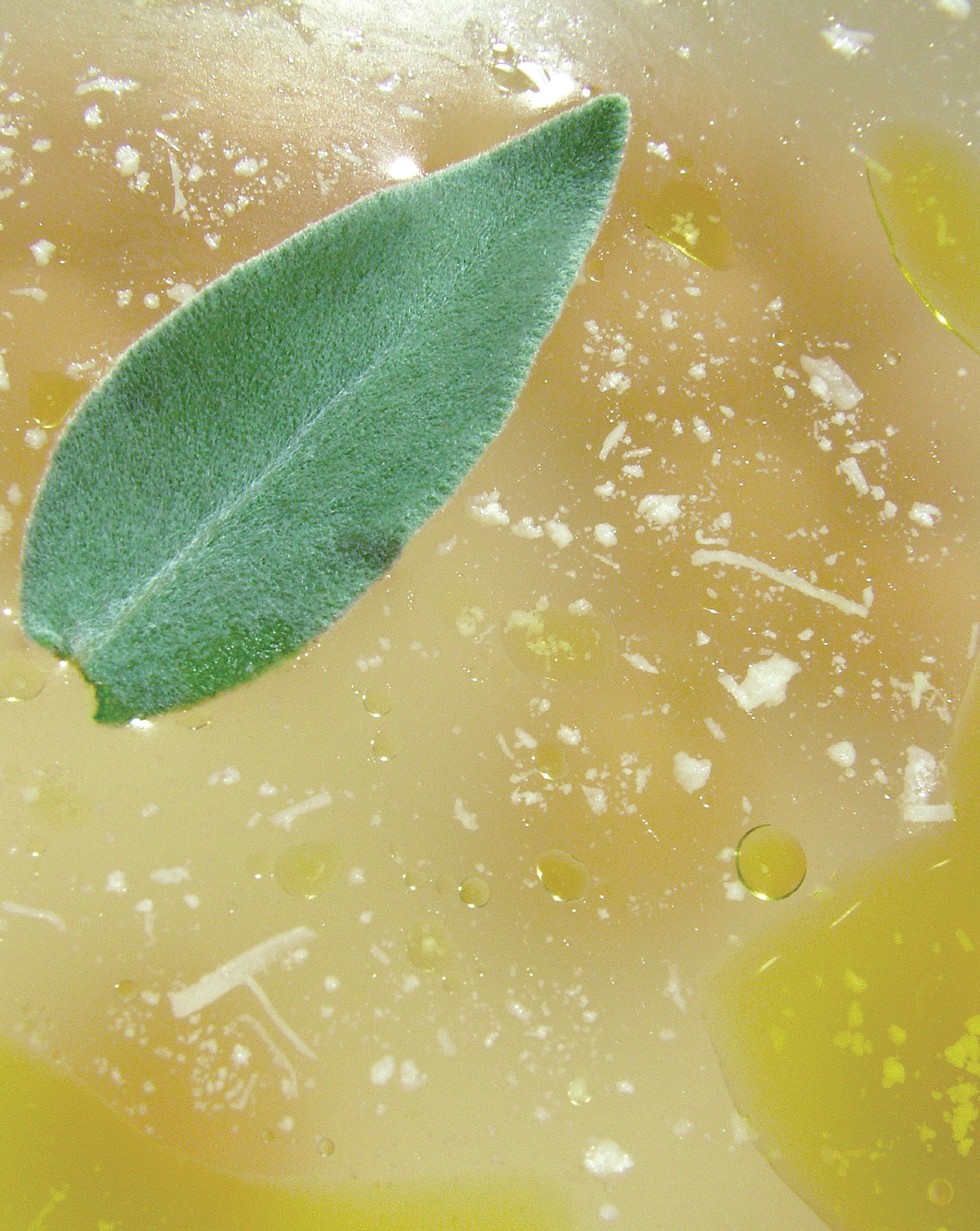Ingestion / Soup of the Dead
Into the abyss
Xavier Girard
“Ingestion” is a column that explores food within a framework informed by aesthetics, history, and philosophy.
All night long a huge cloud of dead wood and green mud poured into the bay like milk boiling over. It is so cold that our teeth chatter as we laugh. We run through the rain in muddied streets, searching for a thick winter pesto that burns the tongue. As we open the door of the restaurant Acchiardo, located in the shadows of the jesuiti, in a haze redolent of daube, ravioli, and dark wine, the mangiafagioli hardly raise an eyebrow. The obituary of the day includes “soup of the dead.” The owner brings it to us in heavy white plates. It’s a soup in brodo (in bouillon) of great simplicity: water slightly colored with a few chickpeas, the remains of some pig’s feet—such as Rabelais ate in his spelt soup at La Devinière—and two sage leaves. “There’s nothing simpler,” explains Acchiardo: “You soak three hundred grams of dried chickpeas for twelve hours, you cook them over a low flame in a good liter of salted and peppered water for three hours. After three-quarters of an hour, you add three hundred grams of sliced pork breast—I use pancetta, which is tastier—a clove-studded onion, and several pig’s feet in pieces. Seven minutes before the end of the cooking, you add the sage leaves, then serve it boiling hot in a hollow plate like these, sprinkled with a trickle of olive oil, and there it is! The soup of the dead.”

We close our eyes. My friend Jean-Paul Marcheschi, whom I brought here, lowers his head towards the plate and inhales with all his being, like the worshippers of the ortolan, an invisible vault over his head. “During my childhood,” he murmurs, “near Cap Corse, not far from Pedre Scritte, on the night of the 1st to the 2nd of November, we ate this with tiani (Soissons beans) and salviata, that serpentine bread kneaded with wine and flecked with sage. This was the stone soup, the poorest of soups, an archaic dish originating in pagan times. We called it ‘eating the heads of the dead.’ The soup of oracles! La mummia—a substance resembling dried cod made from Egyptian mummies and sold at the price of gold between Sfax and Marseilles—had the same divinatory virtues. It comforted the dead during their journey. In order not to offend them, it was forbidden to speak or to blow. We gulped it down in silence, trying not to sniffle. When we finished, the bones of the pig’s feet were scattered over the bottom of the plate, like remains after the pillage of a tomb.” The plate steams gently upon the checkered tablecloth. We examine it like the walls of caves. The liquid is so clear that we could count the chickpeas and discern the island of pig’s feet in the bronzed lake. “It’s the isle of the dead,” he tells me. “We drink the water of the Styx, the depth of a well of memory, directly from the manger of the shades.”
A bit of grated parmigiano reggiano, almost powdery, very strong and acidic, and a dribble of green olive oil upon the emerging reliefs, and we plunge, like the diver of Paestum, into this soup of the abyss—with, as the saying goes, “the dead as our companions.” The bouillon is peppery, yet a touch of very fine lard ends up sliding under the chickpeas, with their so tender and sugary flesh, to spread out into the greenness of the olive oil and the pungency of the parmesan. Little by little, we let ourselves be inhaled by its depths. We don’t eat, we don’t cut into our soup, we unearth our dead, we oscillate between two waters, amidst the nocturnal confines, joined together with the sea of omens. When we return to the surface, the bean-eaters look at us, mocking, as if we had dipped our spoons into the gruel of Hades.
Translated by Allen S. Weiss
This article first appeared in La pensée de midi No. 13 (2004), a special issue on “La cuisine, un gai savoir,” edited by André Pitte, Xavier Girard, and Thierry Fabre.
Xavier Girard is a writer, curator, and teacher specializing in modern art and Mediterranean culture. He frequently writes on cuisine.
Spotted an error? Email us at corrections at cabinetmagazine dot org.
If you’ve enjoyed the free articles that we offer on our site, please consider subscribing to our nonprofit magazine. You get twelve online issues and unlimited access to all our archives.